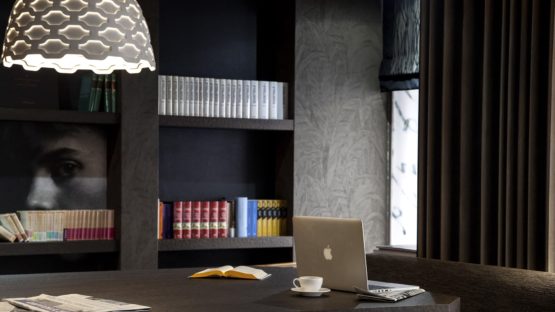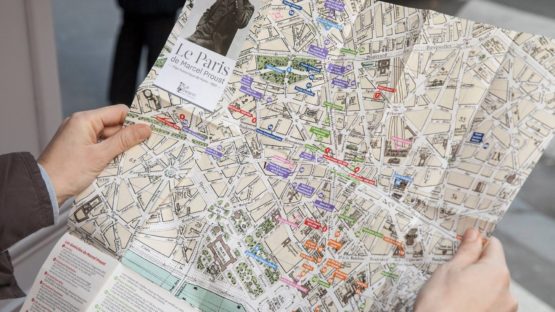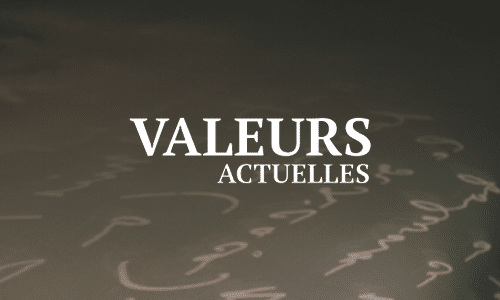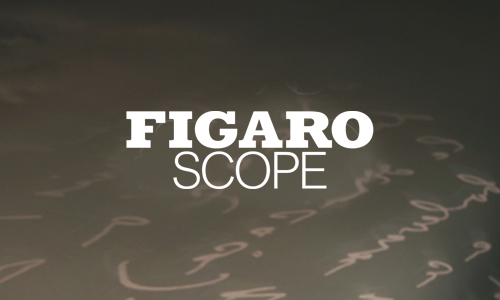The 11 rue Constantinople address already has a literary history because the famous Hungarian poet Endre Ady stayed there during his Parisian travels between 1904 and 1911 and experienced a passionate love story within its walls.
Each room is named after a character, artist or place from Proust’s novel, À la recherche du temps perdu [In Search of Lost Time]; you can sleep in Oriane de Guermantes, Palamède de Charlus or Albertine. They are personalised thanks to a watercolour by Jean Aubertin and quotes that allow you to situate the character in the work.
Architect Aude Bruguière undertook to give a contemporary side to this Proustian universe by appealing to artists responsible for interpreting the writer. The headboards are photographs by Alexei Vassiliev, the Japanese paper chandeliers evoke the magic lantern of Combray and the reproduction of the bindings of the thirteen volumes of In Search of Lost Time realised by Jean de Gonet decorate the Jacques Guérin room.
To help you read or reread Proust, we have devised a multilingual library of 500 books available to visitors. Along with the latest Proustian novelties – more than a dozen appear each year in French – we suggest that everyone reads in the language of their choice: Proust is there in English, Spanish, Chinese, Japanese, Greek, Estonian, Maltese or Italian. Quality translations, brought together over the years thanks to trips and donations from our guests.
The collections of rare editions, manuscripts and art bindings contribute to the hotel’s reputation among Proustians around the world. A showcase displays the souvenirs of Céleste Albaret, the devoted governess of Marcel Proust without whom In Search of Lost Time could not have succeeded. It is to pay tribute to her that the Céleste Albaret Prize bears her name. Each year at Swann, this literary prize goes to a book published on Proust or his work, awarded by a jury of academics and writers.
Your coffee and your cocktails are also Proustien because we have specially ordered the coffee that Marcel Proust drank. His faithful governess Céleste Albaret recounts how she went every day to buy it for him from the shop in rue de Lévis.
Every day, In the corner of the bar, Aurélie prepares you delicious Proust cocktails, whose recipe varies according to the characters: will you be tempted by the Charlus, the Albertine or the Mlle de Saint-Loup?
For those who would like to know more about the writer, we have put some educational material at their disposal.
In addition to the quotes that enamel the corridors and bathroom windows, you will find a small booklet on your bedside table that includes the watercolours and texts of the 81 rooms.
An illustrated chronology summarising the main stages of Proust’s life can be seen at the entrance of the hotel. Nearby, a sound shower allows you to listen to excerpts of In Search of Lost Time read by great actors.
To follow the writer’s footsteps in this neighbourhood where he lived all his life, we have prepared a historical map of Marcel Proust’s Paris. Visible in large format on a wall of the hotel, we also distribute it in the form of a paper map to take everywhere with you in order not to miss any of the writer’s noteworthy addresses: his successive residences in the 8th arrondisement, his favourite restaurants or the society salons he frequented.
In the exhibition area at the entrance of the hotel, you can try to read the 3000 pages of In Search of Lost Time on a single panel with a magnifying glass. There are only ten copies in the world of this astonishing contemporary painting. A little further on, two creations of one of the most famous fashion designers of the Belle Epoque, an evening dress bodice and the opera mantle worn by the Marquess of Aligre in 1905 and described by Proust in Sodom and Gomorrah on the shoulders of the Marquise de Cambremer.
The life of a Hôtel Littéraire is punctuated by frequent cultural events such as literary prizes, exhibition openings, and reading or theatre evenings.
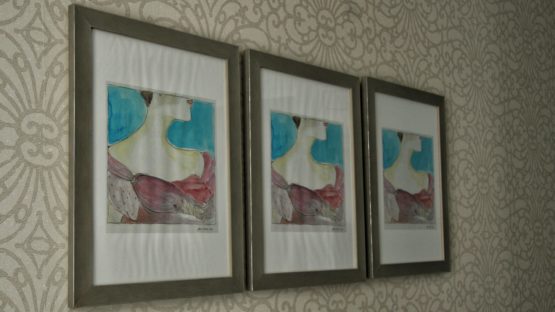
 “We always like to lose ourselves, to travel, when we read.” (Marcel Proust).
“We always like to lose ourselves, to travel, when we read.” (Marcel Proust).







